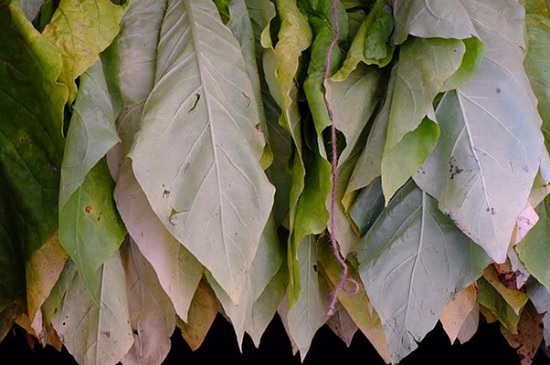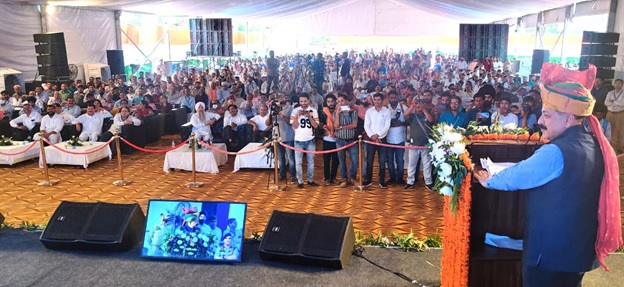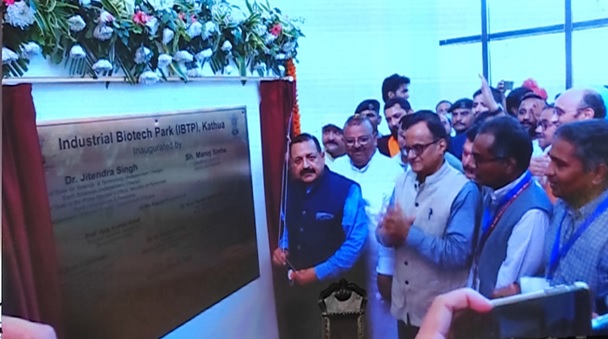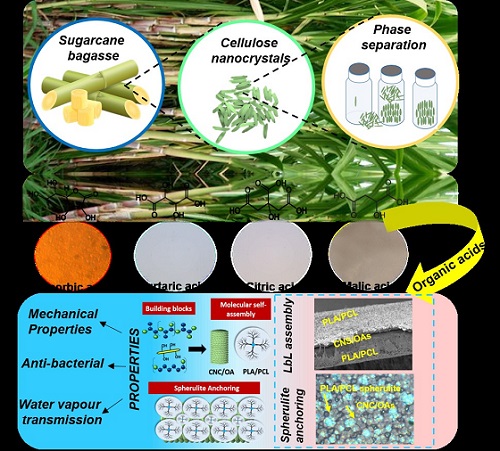
Brief idea about the project and its outcomes
A team of researchers from the Indian Institute of Technology Roorkee (IIT Roorkee), Department of Polymer and Process Engineering, has developed a structural colour-based sensor from sugarcane bagasse. The objective is to find a method to reduce the environmental load due to the burning of agro waste and evolve newer means to use them sustainably.
A lot of colours result from pigmentation – chemicals that absorb specific wavelengths of light, leaving the remaining reflected wavelengths to make up the colour that we see. But colours can also appear when light rays are scattered off microstructures, interfering constructively with one another at certain wavelengths. This is called the structural colour. Such structural colouration is seen in iridescent objects like opals or peacock feathers, the colours of which change depending on the viewing angle.
IITR researchers Chhavi Verma, Saurabh Kumar Kardam, Monika Chhajed, Upendranath Nandi, and Pradip K. Maji used sugarcane bagasse and extracted Cellulose nanocrystal (CNCs), which is responsible for the generation of structural colour as it self-assembles to form a chiral nematic structure at a particular concentration.
“These nanocellulose-based films act as colorimetric sensors where their colour can be tuned by using different dopants in the form of organic acids. These films were further interlocked between layers of biopolymers to form a laminated structure having robust mechanical stability. These films were then tested for their anti-bacterial and water vapour transmission properties,” researchers inform India Science Wire.
A team of researchers from the Indian Institute of Technology Roorkee (IIT Roorkee), Department of Polymer and Process Engineering, has developed a structural colour-based sensor from sugarcane bagasse. The objective is to find a method to reduce the environmental load due to the burning of agro waste and evolve newer means to use them sustainably.
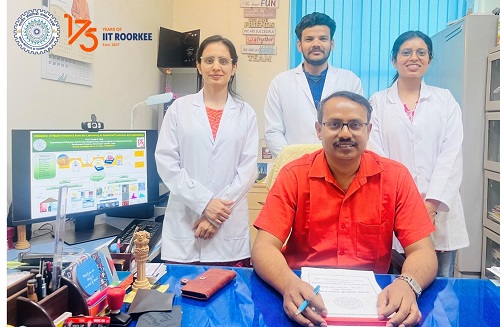
Prof. P K Maji, Chhavi Verma, Saurabh Kardam, Monika Chhajed (Left to right)
Compared to the method using dyes or pigments, producing structural colours has several advantages, including high efficiency in converting light sources into colours. Such colours are environment friendly and stable if the material’s structure is not damaged or deformed. Structural colours have broad application prospects in displays, decoration, anti-counterfeiting, etc. Agricultural waste can be converted to value-added products in colorimetric sensors.
The researchers propose a plan to fabricate a novel class of cellulose-based colour sensors, which will replace traditional sensors currently used in the industry for packaging, cosmetics, food, textiles, and security labelling. Scaling up the fabrication of such nanocellulose-based sensors will allow manufacturing a sustainable, biocompatible, and potentially edible alternative to conventional colour sensors for mass and commercial applications. The composite films displayed good visual colour-sensing properties with moderate antibacterial activity for Escherichia coli.
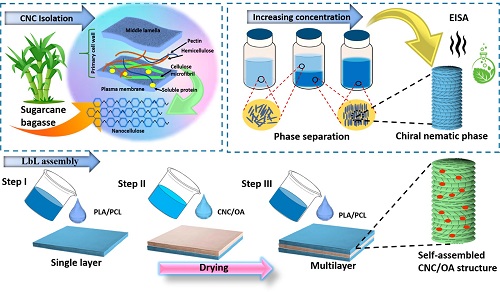
Schematic of methodology
“Use of agricultural residues will impact the farmers positively, who will be provided with a solution by adding value to a product otherwise considered waste. From a bio-economy perspective, the environmental impact and definition of the market positioning of the production process and the final products will be analysed giving an ecology- and economy-based stand of the sustainable colour sensors”, study team elucidates.
Structural or physical colour is produced by a pure physical structure without any pigment. Different colours are generated simply by tuning the arrangement of nanocrystals using various external dopants in the form of different organic acids. The team successfully isolated Cellulose nanocrystals (CNCs) from bagasse and found that the CNC-based suspension, when concentrated to a threshold value, generates a liquid crystalline phase where crystals are arranged in a chiral nematic order. This suspension, when cast into thin films, reflected visible light on interaction with the ordered nanocrystals. These films are durable and mechanically robust to be used as colorimetric sensors in bio-medical or packaging industries.
The bio-based economy can contribute to a more sustainable society, especially in the colour sensing industry, not only because it reduces our dependency on fossil fuels for energy and industrial raw materials, but also by generating less waste lowering energy consumption, and using less water. The material has potential implications to be utilised in the packaging industry as it is non-toxic and is sustainable. CNCs can be an ideal renewable green material because of abundant raw material sources, nontoxicity, good biocompatibility, and biodegradability.
The study has been published in the journal ACS Applied Nano Materials.
India Science Wire
ISW/SM/IITR/ECT/Eng/20/03/2023


